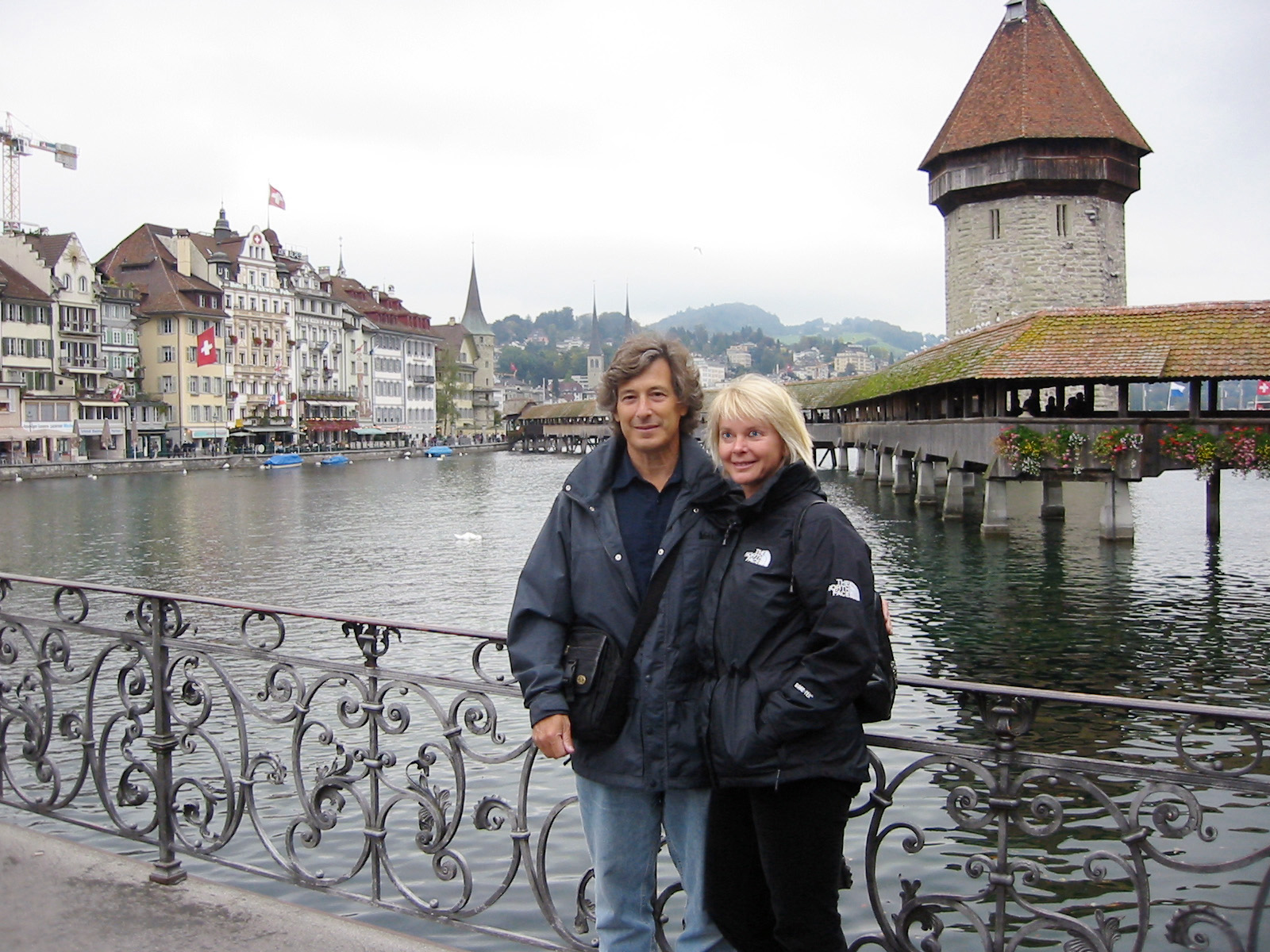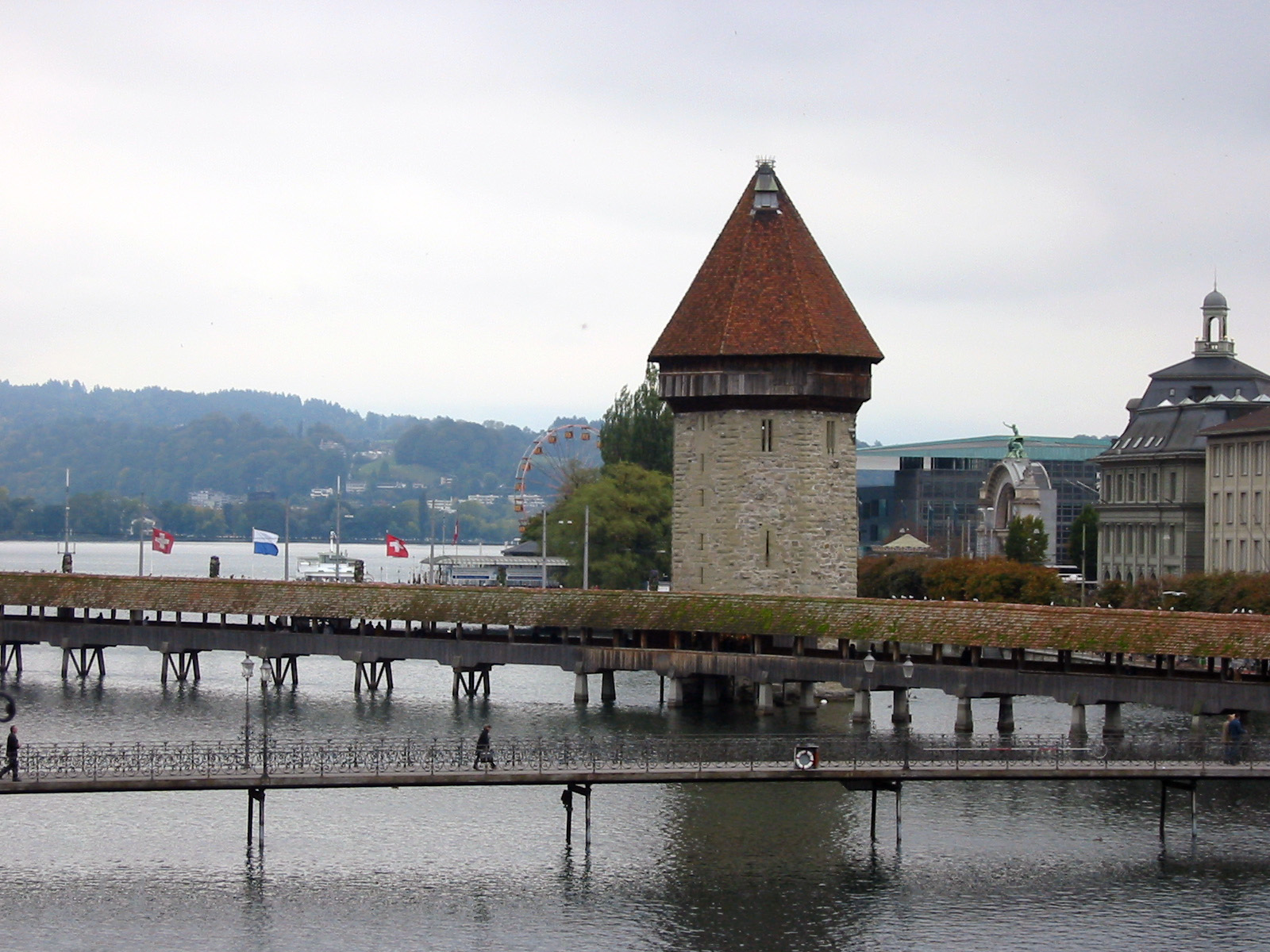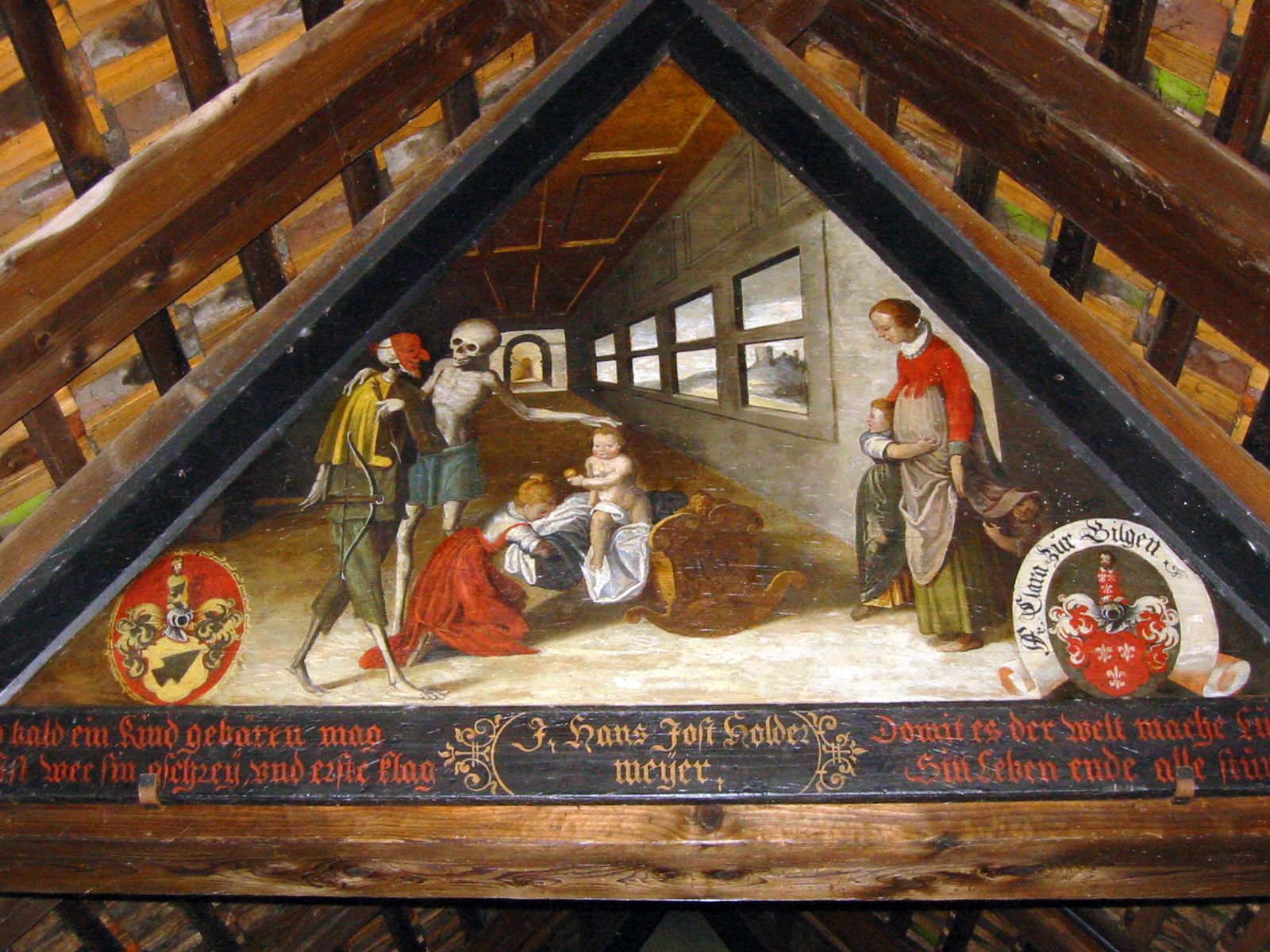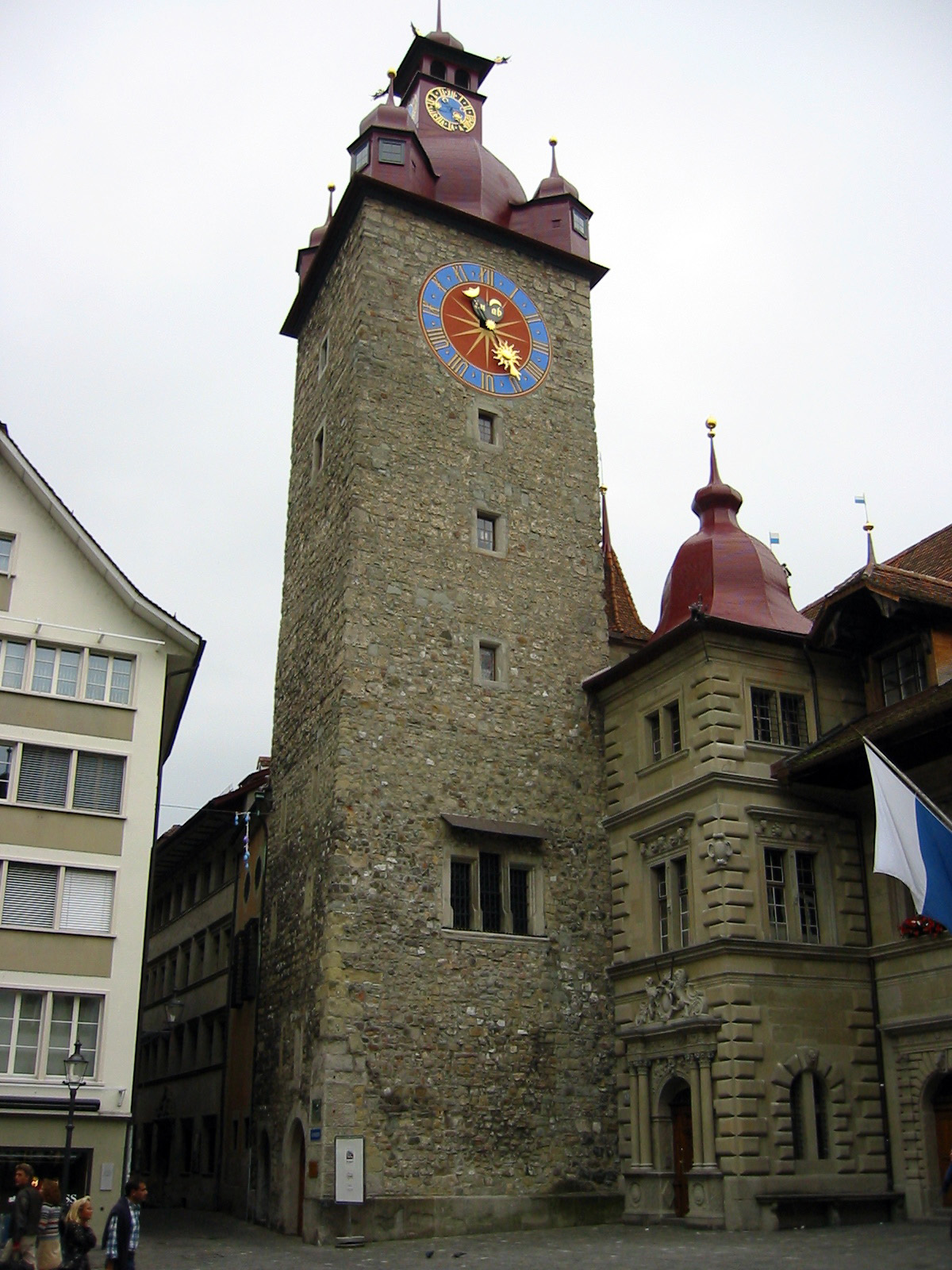 Once again the three hour drive north to Lucerne (ah yes, the famous 3 hour tour) turned into an all day affair. Never believe anyone (or anything) when they tell you it’s an easy 3 hr drive.
Once again the three hour drive north to Lucerne (ah yes, the famous 3 hour tour) turned into an all day affair. Never believe anyone (or anything) when they tell you it’s an easy 3 hr drive.
The great thing about driving in Switzerland is there are no tolls. The bad thing about driving in Switzerland is if you don’t live there and pay the annual road tax, you have to pay an additional road charge when you rent a car. If you don’t rent a car in Switzerland (like we did), you’ll need to stop at the border and pay for a nifty Road Use sticker for 30€. We knew we’d have to stop at the Swiss border and buy one. There were a lot of other people in the cue who had no idea about the charge. They were pissed. We just moved on, even though we were spending just one night in Lucerne before driving back in France. It was a bit pricey for the 250 km of roads we were going to put our wheels across. But then, if you figure in the hours we sat in idle traffic due to the road construction that seemed to consume all of the Swiss highways at one time, I guess you could say we got our money’s worth.
The Swiss countryside was an abundance of rolling green hills coming off the high Alps. Gretchen said she had always imagined that this was the kind of country her ancestors came from; actually they came from the hills north of Prague which look nothing like this. But as I was saying, we got to see a lot of it. It took us 90 minutes to crawl 10 km through the St Gottardo Pass (I think Saint Gottardo is the patron Saint of traffic jams). And, of course, to make matters even worse, it was raining.
By the time we reached Lucerne, I had one whopping headache.
We made it into the center of town and managed to find the Reuss River. We could even see our hotel down river. We just couldn’t get there. We kept on driving back and forth over the river, but there were no car roads. Everything was blocked off for pedestrian/tourist traffic. I was more than ready to bag the hotel and head back out to the highway. We finally stopped at a watch store to ask directions and they handed me a city map. That was all we needed. We drove a few kilometers down river, over another bridge and got the car within 3 blocks of the hotel. At the check in, the receptionist told us, don’t worry about the pedestrian only street signs, just drive the car right up to the hotel and drop off our bags. Thank you very much….
We originally thought we’d have most of the afternoon to explore Lucerne but by the time we checked into the hotel, it was about 4pm, still enough time to walk through the old streets and across the old bridges. This is one of your perfect picturesque, northern European tourist towns with little pedestrian streets and gothic squares filled with couture clothing, swiss watches and of course lots of chocolate.
 The big attraction across the Reuss River is the Kapelibrucke (Chapel bridge). It’s the oldest wooden bridge in Europe, originally built in the early 14th century. In 1993, a fire broke out after someone threw a cigarette butt down and destroyed about 80% of it. It’s since been rebuilt and there are no smoking signs.
The big attraction across the Reuss River is the Kapelibrucke (Chapel bridge). It’s the oldest wooden bridge in Europe, originally built in the early 14th century. In 1993, a fire broke out after someone threw a cigarette butt down and destroyed about 80% of it. It’s since been rebuilt and there are no smoking signs.
 Yes, it’s the oldest, but for us the real beauty was the Spreuerbrucke, a little further down the river. This 15th century wooden bridge (the oldest covered bridge in Europe) still has the 17th century “Dance of Death” paintings of Kaspar Meglinger and they are in great condition. In true medieval style, they show a chronical of the plague that devasted Europe in the 14th century. The city lost about 40% of it’s population from the Black Plagues of the 14th century. Some of the gabled paintings of the history of Lucerne from the Chapel Bridge still remain, but most of them were destroyed in the fire. And none of them are as interesting as the Plague paintings of Spreurbrucke.
Yes, it’s the oldest, but for us the real beauty was the Spreuerbrucke, a little further down the river. This 15th century wooden bridge (the oldest covered bridge in Europe) still has the 17th century “Dance of Death” paintings of Kaspar Meglinger and they are in great condition. In true medieval style, they show a chronical of the plague that devasted Europe in the 14th century. The city lost about 40% of it’s population from the Black Plagues of the 14th century. Some of the gabled paintings of the history of Lucerne from the Chapel Bridge still remain, but most of them were destroyed in the fire. And none of them are as interesting as the Plague paintings of Spreurbrucke.
 Another great find for us was in the 17th century Am-Rhyn Haus. The house is currently the home of the city’s Picasso museum. There are a few paintings, a few ceramic pieces, but the highlight of the gallery is the photo collection. In 1956, photo journalist David Duncan Douglas, was introduced to Pablo Picasso while Picasso was having a bath. Picasso was 77 at the time. The two became fast friends and from 1956-68, Douglas created the most wonderful photographic view of life with the Picasso family. This intimate portrait reveals a loving family man we’ve never seen before. We always hear the stories about Picasso the womanizer or Picasso the insensitive brut, but these photos are proof of Picasso the loving father, husband and friend of Gary Cooper. The cast of characters includes Pablo, Jacqueline (from before they were married on through their wedding day), the children, the dogs, the houses in Cannes and Aix en Provence and cameo appearances from Jean Cocteau to Picasso’s tailor.
Another great find for us was in the 17th century Am-Rhyn Haus. The house is currently the home of the city’s Picasso museum. There are a few paintings, a few ceramic pieces, but the highlight of the gallery is the photo collection. In 1956, photo journalist David Duncan Douglas, was introduced to Pablo Picasso while Picasso was having a bath. Picasso was 77 at the time. The two became fast friends and from 1956-68, Douglas created the most wonderful photographic view of life with the Picasso family. This intimate portrait reveals a loving family man we’ve never seen before. We always hear the stories about Picasso the womanizer or Picasso the insensitive brut, but these photos are proof of Picasso the loving father, husband and friend of Gary Cooper. The cast of characters includes Pablo, Jacqueline (from before they were married on through their wedding day), the children, the dogs, the houses in Cannes and Aix en Provence and cameo appearances from Jean Cocteau to Picasso’s tailor.
We spent the night in a room overlooking the river, in a Swiss style sleigh bed covered in blue and gold plaid. Gretchen described it as an “oversized doggy bed”.
And the next morning we were off to France.
You must be logged in to post a comment.